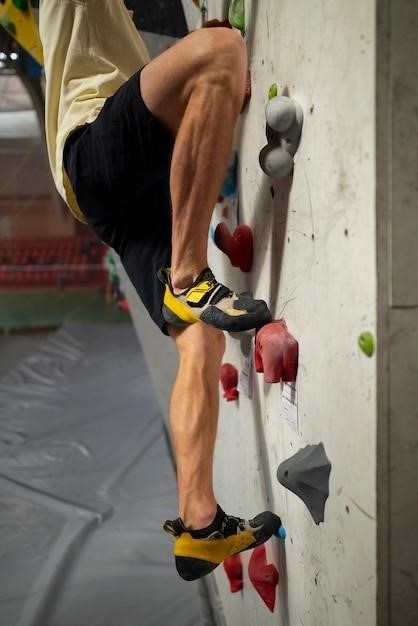A Statement of Faith is a foundational document outlining core beliefs and values, serving as a guiding framework for religious or organizational practices and unity among believers.
Definition and Purpose of a Statement of Faith
A Statement of Faith is a formal document that outlines the core beliefs, values, and doctrines of a religious organization or individual. It serves as a clear declaration of faith, providing a unified understanding of spiritual principles and practices. This document is essential for establishing identity, guiding decision-making, and fostering unity among believers. It often includes key tenets such as the authority of Scripture, the nature of God, the role of Jesus Christ, and the work of the Holy Spirit. The purpose of a Statement of Faith is to inspire, educate, and ensure consistency in adhering to foundational truths, making it a vital tool for spiritual growth and organizational integrity.
Importance of a Statement of Faith in Religious and Organizational Contexts
A Statement of Faith is crucial in religious and organizational contexts as it provides clarity and unity regarding core beliefs. It serves as a guiding document that ensures consistency in doctrine and practice, fostering a shared understanding among members. By outlining fundamental truths, it helps prevent misinterpretation and maintains accountability to established principles. In religious settings, it strengthens community bonds and provides a foundation for worship, teaching, and outreach. For organizations, it acts as a compass, aligning actions and decisions with stated values. Additionally, it serves as a tool for evangelism and discipleship, offering a clear representation of beliefs to outsiders and guiding individuals in their spiritual journey. Ultimately, it ensures that the mission and purpose of the community remain rooted in its foundational truths.

The Bible
The Bible is recognized as God’s revelation, the authoritative Word, essential for guiding faith and practice, reflecting its divine inspiration and role in spiritual life.

The Inspiration and Authority of Scripture
The Bible is inspired by God, making it fully authoritative and trustworthy. Scripture originates from divine breath, as stated in 2 Timothy 3:16-17, guiding all aspects of faith and life. Its authority extends to both individuals and the church, serving as the ultimate guide for doctrine, ethics, and practice. The dual authorship—divine and human—ensures its teachings are free from error, reflecting God’s perfect will. This inspiration and authority are foundational for Christian belief, shaping worship, morality, and mission. The Bible’s reliability underscores its role as the final word in matters of faith, uniting believers in shared conviction and purpose.
The Role of the Bible in Guiding Faith and Practice
The Bible is the ultimate guide for Christian faith and practice, offering timeless truths for spiritual growth and daily living. It provides clear teachings on morality, prayer, worship, and relationships, shaping believers’ lives according to God’s will. Through its principles, individuals are equipped to make decisions aligned with divine purpose, whether in personal choices or community engagement. The Bible also serves as a source of comfort and wisdom, helping believers navigate life’s challenges. Its teachings on love, forgiveness, and service inspire followers to reflect Christ’s character in their actions. By applying biblical truths, Christians can live a life pleasing to God, fostering a deeper relationship with Him and impacting the world around them.
God
God is the Almighty, eternal Creator, existing in three persons: Father, Son, and Holy Spirit. He is sovereign, loving, just, merciful, and holy, sustaining all creation and ruling over heaven and earth with divine authority.
The Nature and Attributes of God
God is an eternal, unchanging, and self-existent Being, perfect in holiness, love, and wisdom. He is omnipotent, omniscient, and omnipresent, exercising sovereign control over all creation. God’s nature is transcendent, yet He is personally engaged with humanity, revealing Himself as a relational Being who desires fellowship with His people. His attributes include justice, mercy, grace, and truth, all perfectly balanced in His divine character. God is the source of all life and the ultimate standard of righteousness, deserving of worship, reverence, and obedience. His nature is incomprehensible in full, yet sufficiently revealed through Scripture and creation to inspire awe and devotion.
The Trinity: Father, Son, and Holy Spirit
The Trinity is a profound Christian doctrine describing God as one essence in three distinct, coequal, and coeternal persons: the Father, the Son (Jesus Christ), and the Holy Spirit. Each person is fully divine, sharing the same nature and attributes, yet functioning in distinct roles. The Father is the sovereign Creator, the Son is the Redeemer, and the Holy Spirit is the Sanctifier. This unity and diversity are central to Christian theology, reflecting God’s complex yet harmonious nature. The Trinity is a mystery beyond full human comprehension but is revealed in Scripture through their collaborative work in creation, redemption, and sanctification. This doctrine is foundational for understanding God’s character and relationships within the Godhead.
Jesus Christ
Jesus Christ, fully divine and human, is the Son of God, born of the Virgin Mary. He is the Savior, Redeemer, and Lord, whose life, death, and resurrection provide salvation for humanity through faith and grace.
The Divinity and Humanity of Jesus Christ
Jesus Christ is uniquely both fully divine and fully human, a mystery central to Christian theology. As God incarnate, He possesses all divine attributes, such as omnipotence and omniscience, while also sharing in human experiences, including emotions and physical limitations. This dual nature is affirmed by Scripture, which describes Him as the Son of God and the Son of Man. His divinity is evident in His miracles, teachings, and resurrection, while His humanity is demonstrated through His birth, suffering, and death. This union of divinity and humanity in Jesus Christ is essential for His role as Savior, enabling Him to mediate between God and humanity, providing redemption through His sacrifice.
The Life, Death, and Resurrection of Jesus Christ
Jesus Christ lived a sinless life, demonstrating God’s love and righteousness through His teachings, miracles, and compassion. His death on the cross was a sacrificial atonement for the sins of humanity, fulfilling God’s plan to reconcile creation to Himself. This act of redemption was voluntary and substitutionary, underscoring His love and obedience to the Father. On the third day, Jesus triumphantly rose from the dead, defeating sin and death, and securing salvation for all who trust in Him. His resurrection validates His divinity, confirms the efficacy of His sacrifice, and offers hope of eternal life. This event is the cornerstone of Christian faith, transforming lives and promising victory over sin and eternal destiny with God.
The Holy Spirit
The Holy Spirit is the third Person of the Trinity, coequal with God the Father and Jesus Christ, convicting sinners of sin, regenerating hearts, and indwelling believers to empower godly living.

The Person and Work of the Holy Spirit
The Holy Spirit is the third Person of the Trinity, fully divine and coequal with God the Father and Jesus Christ. He is a personal Being, not merely a force or influence, possessing intellect, emotion, and will. The Holy Spirit’s work includes convicting sinners of their sin, regenerating hearts to enable faith, and indwelling believers to sanctify and empower them for godly living and service. He imparts spiritual gifts to edify the church and produces fruits such as love, joy, and peace in the lives of believers. The Holy Spirit glorifies Jesus Christ and serves as the helper and comforter for God’s people, guiding them in truth and empowering them for ministry and witness.
The Gifts and Fruits of the Holy Spirit
The Holy Spirit bestows spiritual gifts upon believers, such as wisdom, prophecy, healing, and tongues, to edify the church and serve others. These gifts are distributed according to God’s sovereign will and are intended to promote unity and effectiveness in ministry. Additionally, the Holy Spirit produces fruits in the lives of believers, including love, joy, peace, patience, kindness, goodness, faithfulness, gentleness, and self-control. These fruits reflect the character of Christ and demonstrate the transformative work of the Holy Spirit in the lives of believers. Both the gifts and fruits are empowered by the Holy Spirit, enabling believers to live a life of personal holiness and effective service, glorifying God in all aspects of life.

Humanity

Humanity, created in God’s image, possesses inherent value and dignity. However, sin entered the world through disobedience, causing separation from God and requiring redemption through Christ.
The Creation and Fall of Humanity
Humanity was created by God in His own image, male and female, endowed with dignity, purpose, and the capacity to relate to Him; This divine act established humanity as the crown of creation, with dominion over the earth. However, through Adam and Eve’s disobedience in the Garden of Eden, sin entered the world, leading to a fractured relationship with God. This fall resulted in spiritual and physical death, causing humanity to lose its original innocence and harmony with God. The fall introduced suffering, evil, and separation, necessitating redemption. This foundational event shapes the understanding of humanity’s need for salvation and restoration through God’s grace.
The Nature of Sin and Its Impact on Humanity
Sin is a fundamental rebellion against God, rooted in humanity’s disobedience and self-will. It originates from the fallen nature inherited from Adam and Eve, manifesting as a separation from God and His righteousness. Sin corrupts every aspect of human life, leading to spiritual, emotional, and relational brokenness. Its impact is universal, affecting every person, and results in guilt, shame, and condemnation. Sin distorts humanity’s purpose, replacing God-centered living with self-centeredness. It also leads to suffering, evil, and death, both physical and spiritual. Ultimately, sin necessitates redemption, as humanity cannot overcome its effects through its own efforts, emphasizing the need for divine grace and salvation through Jesus Christ.

Salvation
Salvation is a divine act of deliverance from sin, offered through Jesus Christ’s sacrifice, reconciling humanity to God and granting eternal life.
The Doctrine of Salvation: Faith and Grace

Salvation is a divine act of God, rooted in His grace and received through faith in Jesus Christ. It is a gift, not earned by works, but freely given to all who trust in Christ as Lord and Savior. Faith is the response of the human heart to God’s offer of salvation, made possible by the Holy Spirit’s work in convicting and drawing individuals to repentance. Grace emphasizes God’s unmerited favor, demonstrated through Christ’s death and resurrection, which satisfies the penalty for sin. This doctrine underscores the transformative power of salvation, restoring humanity’s relationship with God and securing eternal life. It is the cornerstone of Christian theology, reflecting God’s love and mercy.
The Role of Repentance and Sanctification
Repentance is an essential response to God’s call, involving a heartfelt turning away from sin and toward Him. It is a fundamental transformation of mind and life, enabled by the Holy Spirit, leading to a sincere desire to follow Christ. Sanctification is the ongoing process by which believers are conformed to the image of Jesus, separated from sin, and dedicated to God’s purposes. It begins at salvation and continues throughout life, empowered by the Holy Spirit. Through repentance and sanctification, believers grow in holiness, reflect God’s character, and fulfill their calling to live as His people. These processes are rooted in grace and essential for spiritual growth and intimacy with God.

The Church
The Church is the body of believers united in Christ, called to worship, serve, and spread God’s Word, fulfilling His mission on Earth.
The Definition and Purpose of the Church
The Church is the sacred community of believers united by faith in Jesus Christ, serving as the body of Christ on Earth. It exists to glorify God, nurture believers, and share the Gospel. The Church is both universal, encompassing all followers of Christ, and local, represented in individual congregations. Its purpose includes worship, fellowship, discipleship, and mission, equipping believers to live out their faith. The Church also serves as a beacon of hope, demonstrating God’s love and justice in the world. Through sacraments, teachings, and service, the Church fulfills its divine mandate to spread God’s kingdom and edify His people.
The Role of the Church in the Community
The Church serves as a vital instrument of God’s grace and transformation within society. It is called to demonstrate Christ’s love through compassionate service, addressing the spiritual, emotional, and physical needs of people. The Church acts as a beacon of hope, offering refuge, guidance, and reconciliation in a broken world. It fosters unity among diverse individuals, promoting harmony and justice. Through outreach ministries, the Church engages in acts of mercy, such as feeding the hungry, sheltering the homeless, and advocating for the marginalized. It also equips believers to live out their faith in their daily lives, impacting their communities for Christ; The Church is not merely a religious institution but a transformative force in society, reflecting God’s heart of love and redemption.
Christian Living
Christian living involves following Christ’s teachings, demonstrating faith through actions, and fostering a personal relationship with God. It emphasizes love, humility, and serving others faithfully.
Principles of Christian Ethics and Morality
Christian ethics and morality are rooted in the teachings of Jesus Christ and the Scriptures, emphasizing love, compassion, and righteousness. Key principles include humility, honesty, forgiveness, and kindness. Believers are called to live according to God’s will, reflecting His character in their actions and decisions. The Golden Rule, “love your neighbor as yourself,” serves as a foundation for ethical behavior. Additionally, Christians are urged to uphold justice, mercy, and faithfulness in all relationships. These principles guide believers in navigating moral dilemmas and fostering a life that honors God and benefits others. By adhering to these ethical standards, Christians strive to be salt and light in a world that often contradicts biblical values.
The Importance of Prayer and Worship
Prayer and worship are vital expressions of a Christian’s relationship with God, fostering intimacy, gratitude, and reverence. Prayer is a direct communication with God, enabling believers to seek guidance, express thanksgiving, and intercede for others. Worship, whether through music, sacraments, or service, honors God’s majesty and redemptive work. Both practices strengthen faith, provide comfort in trials, and align believers with God’s will. Corporate worship also builds unity and accountability within the church, reflecting the body of Christ’s collective devotion. By prioritizing prayer and worship, Christians cultivate a God-centered life, embodying their commitment to follow Jesus and glorify Him in all aspects of life. These practices are essential for spiritual growth and a vibrant, authentic faith.

Eschatology
Eschatology explores the divine plan for the end times, encompassing God’s ultimate triumph and humanity’s eternal destiny, rooted in biblical prophecy and the hope of redemption.
The Second Coming of Jesus Christ
The Second Coming of Jesus Christ is a central doctrine in Christian eschatology, representing the triumphant return of the Messiah to fulfill God’s ultimate plan for humanity. Believers hold this event as a cornerstone of their faith, trusting in the divine promises revealed through Scripture. The Bible portrays the Second Coming as a glorious and bodily return of Christ, signaling the culmination of history and the redemption of creation. This event is expected to bring an end to sin and its consequences, ushering in a new era of eternal life and divine reign. The Second Coming serves as a source of hope and encouragement for Christians, inspiring them to live with anticipation and godliness, while also prompting urgency in sharing the Gospel with all nations.
The Final Judgment and Eternal Destiny
The Final Judgment represents the ultimate reckoning where all humanity will stand before God to account for their lives. This divine act ensures justice, as every individual’s deeds and heart are laid bare. Believers in Jesus Christ, justified by faith, will be acquitted and welcomed into eternal life. Unbelievers, however, will face separation from God, enduring eternal condemnation. Scripture teaches that heaven is a place of perfect joy and fellowship with God, while hell is eternal separation from His presence. This doctrine underscores the urgency of repentance and faith in Christ. The Final Judgment serves as a reminder of humanity’s accountability to God, while believers find hope in the promise of eternal life and the ultimate redemption of creation.
A statement of faith serves as a unifying guide, inspiring believers to live authentically, fostering commitment to truth, and nurturing love for God and humanity.
The Significance of a Statement of Faith in Modern Times
A statement of faith remains vital in modern times, offering clarity and unity amid cultural shifts. It provides a shared foundation for beliefs, guiding individuals and communities in staying true to their values despite changing societal norms. By articulating core convictions, it fosters accountability and unity among believers, ensuring that faith remains central in personal and collective life. In an age of diversity and uncertainty, such a statement serves as a beacon, helping navigate complex ethical and spiritual challenges. It also equips believers to engage thoughtfully with contemporary issues while remaining rooted in timeless truths, promoting a life of integrity, compassion, and devotion to God and humanity.
Final Thoughts on the Importance of a Statement of Faith
A statement of faith serves as a powerful tool for unifying beliefs, guiding actions, and fostering spiritual growth. It provides a clear and concise expression of core convictions, helping individuals and communities remain steadfast in their commitment to God. By grounding faith in scripture and timeless truths, it offers a compass for navigating life’s challenges. A well-crafted statement of faith not only unites people across generations but also inspires future generations to embrace and live out their beliefs with integrity. Ultimately, it is a declaration of devotion, a reflection of one’s walk with God, and a testament to the transformative power of faith in a chaotic world.








































